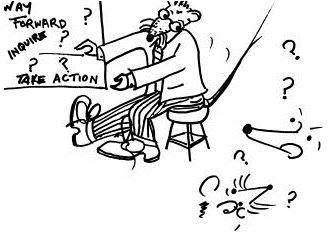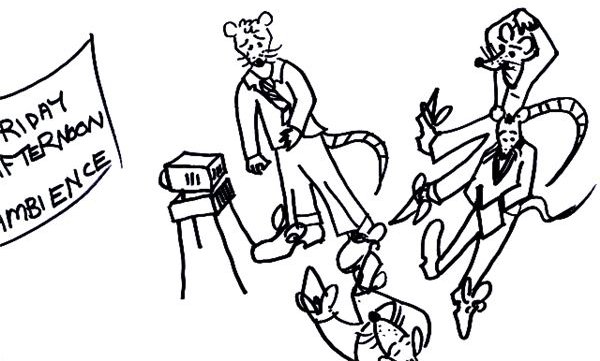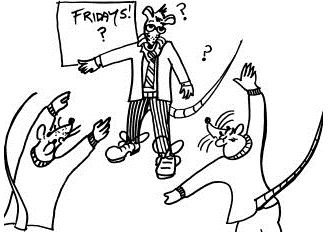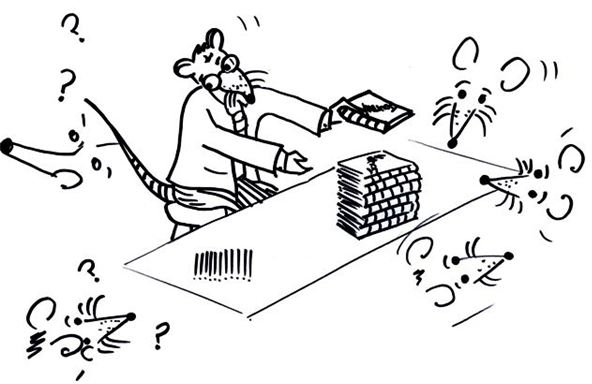Steps to Writing an Action Research Plan
Overview of Six Key Principles to Action Research
Utilizing Winter’s comprehensive overview of six key principles to Action Research, (O’Brien.2021) it is possible to push on to make credible use the data collected in Action Research Projects: Steps in the Process.
In the example Friday Afternoon Ambiance (FAA) the correspondents discover that things were not as they thought they were. And the pesky principle kept asking “How do we ever know what others are thinking?”
The answer in the end was simple; each respondent is under community obligation to truthfully disclose their presuppositions. Students disclosed what they thought the teachers were thinking and vice versa. Threatening as this may seem, the truth set the correspondents free. With new knowledge they were empowered to strategize what they really should be doing of a Friday afternoon. Parents were treated as stakeholders, which only added to the empowerment gained from the inquiry. It was the parents themselves who suggested and put the mechanics of a magazine in place.
Gatherng Data
Step 1 of Action Research: Gathering Data an Account of a Situation
On this account of the way Action Research develops: step one entails gathering data to provide an account of a situation. This was learned in the last article, Action Research Projects: Steps in the Process, which provides ideas about the collection of data. Winter suggests that researchers will want to attribute authority to the data gathered. By implying that they are factual and true, they are saying that the data is true when accepted as relative to the teller. This means that there will be one view according to the parents, teachers and students. Tension perceived when there is a view from a teacher who is also a parent, could be highly informative.
This is not a problem because, “reflective critique ensures people reflect on issues and processes and make explicit the interpretations, biases, assumptions and concerns upon which judgments are made.” Intelligent correspondents learn how to listen deeply to the views of others as they provide practical accounts can give rise to theoretical considerations. (O’Brien.1998)
Reflective Critique

Step 2 of Action research: Dialectical critique
It is not only true to say that social reality is consensually validated and mediated by shared language; it is also true to say that in most communities the participants care deeply about similar issues, but often they see the truth through different lenses.
Dialectical critique occurs when researchers set up a situation whereby they can talk through sets of relationships both between the phenomenon and its context, and between the elements constituting the phenomenon. You might ask was the phenomenon under investigation Friday afternoon, the waste of the Friday afternoon timeslot, the perceived lack of caring on the part of the teachers or the scantiness of the students involved.
The answer is all of the above, if they are of concern to any of the participants and if they impinge on a possible solution or understanding of the “problem.” There is a key idea being portrayed in the little characterization, it is the relationship of the key elements to focus that holds attention upon those constituent elements that are unstable, or/and those that are in opposition to one another.
It is a commonly held belief that those elements in any situation that hold the potential to shock will cause a phenomenon called consciousness raising. Once consciousness of previously hidden truths become known there is a high probability of genuine, fertile and valuable change.
Friday Afternoon (Wasted?)

Step 3 of Action Research: Collaborative Resource
By openly ensuring respect for all of the participants in an action research project, all involved expect and receive not only equal time but equally regarded significance for their ideas. This creates a potential resource pool for creating interpretive categories of analysis, which are democratically negotiated among the participants.
This takes the entire project away from issues of power and control, by striving to avoid the skewing of credibility stemming from the prior status of an idea-holder. This ensures that insights are openly acknowledged contradictions both between many viewpoints and within a single viewpoint.
Don’t forget that the data gathered has been at least triangulated (gathered from at least three collection techniques) and even these data sources might conflict under scrutiny. (Says one thing - does another, but when asked to write material down seems to even be saying something else.)
Student Participation & Parental Involvement


Step 4 of Action Research: Negotiating Risk
When human beings, whether they be powerful or powerless, have inconsistencies of behavior challenged it can be quite threatening. Experimenting with and testing new strategies may have the potential to threaten all previously established ways of doing things. In FAA (above), movies were a safety valve so that teachers felt sure they would be I control on Fridays, having their “safety valve” removed could create psychic fears among the practitioners.
A psychic fear might not just be about whether one is a ‘good teacher.’ This thought risks a blow to the collective ego. Rather what is at risk is the very right to interpret data and “authoritative” judgments. The principle in the FAA example was described as quiet, unassuming but insistent. He was able to allay teacher’s fears and invite participation by pointing out that he too, will be subject to the same process. He offered to keep a journal they would be allowed to read.
Step 5 of Action Research: Plural Structure
There was eventually a solution of sorts devised within the FAA example.
- Time would no longer be wasted on Friday afternoons
- Creative work would be showcased
- A magazine would be created
- Parents would be supportive of the new strategies
- Everyone would think a little harder about phenomena they once just presumed was at they thought it was
But according to O’Brien, Action research methodology has the capacity to embody a multiplicity of views, commentaries and critiques. These lead readers to believe that multiple actions and interpretations could, and even should, result. the idea that not every combination of teacher, students and parents will react in the same way means that the research paradigm has a plural structure of inquiry. One class might be totally enamored of the idea of making films to showcase, another may desperately want to be good writers and offer to critique and review. Some parents might be all cashed up and offer to fund a magazine while others might even want to ask for references to cite as they hone their desk top publishing skills.
During the process of plural text reporting, there will be many accounts of the situation made explicit, with different viewpoints offering commentaries on their contradictions, and a range of options for action presented. (O’Brien, 2001) This is why it is said that the process cycles, with each report, acting as a support for ongoing discussion among collaborators. New ideas might be synergized, and these might lead to new questions or kindle new strategies to be tested and reported upon. It is not expected that there will be some kind of final conclusion which puts forward a final solution. Friday Afternoon may cease to be a problem, however what to do with Friday Afternoon, may continue to be a topic that generates greatly heated but friendly and productive debate.
Step 6 of Action Research: Theory, Practice, Transformation
In this way, theory informs practice, and once the practice has been tested the results will refine theory. This characterizes a simple continuous process of transformation, which can become quite complex. In this case the school environment is peppered with actions, which are based on implicitly held assumptions, theories and hypotheses. When theory and practice are “tracked”, every observed result of investigation provides potential for theoretical knowledge to be enhanced.
This is exciting! Theory, practice and investigation of practice are inseparably intertwined so that the process of change eventually picks up momentum. Co-researchers make explicit the theoretical justifications for actions taken, and they question the basis of those justifications. Practical applications that follow can be subjected to further analysis. It is this transformative cycle that continuously alternates emphasis between theory and practice that provides the school community with opportunities to grow and develop.
Resource List
- Bilorusky,J. (2003) Community Knowledge-Building Handout for Session #7 of WISR Action-Research Seminar Series
- Ferrance,E.2000 Themes in Education LAB @ Brown University
- Gilmore,T., Krantz,J. and Ramirez,R. (1986) “Action Based Modes of Inquiry and the Host-Researcher Relationship,” Consultation 5.3 (Fall 1986): 161
- Kemmis & McTaggart, (1988) The action research planner. Deakin University Press. Victoria
- O’Brien, R. (2001) An Overview of the Methodological Approach of Action Research. In Roberto Richardson (Ed.), Last Accessed Feb 2011.
- Senge,P. (2005) Presence. Crown Business_._
- Susman,G. (1983) “Action Research: A Sociotechnical Systems Perspective.” Ed. G. Morgan. London: Sage Publications, 1983. 95-113
- Winter, R. (1987) Action-Research and the Nature of Social Inquiry: Professional Innovation and Educational Work. Aldershot, England: Gower Publishing Company.
This post is part of the series: Understanding Action Research
Get a great understanding of the action research process with these articles for the graduate student.
